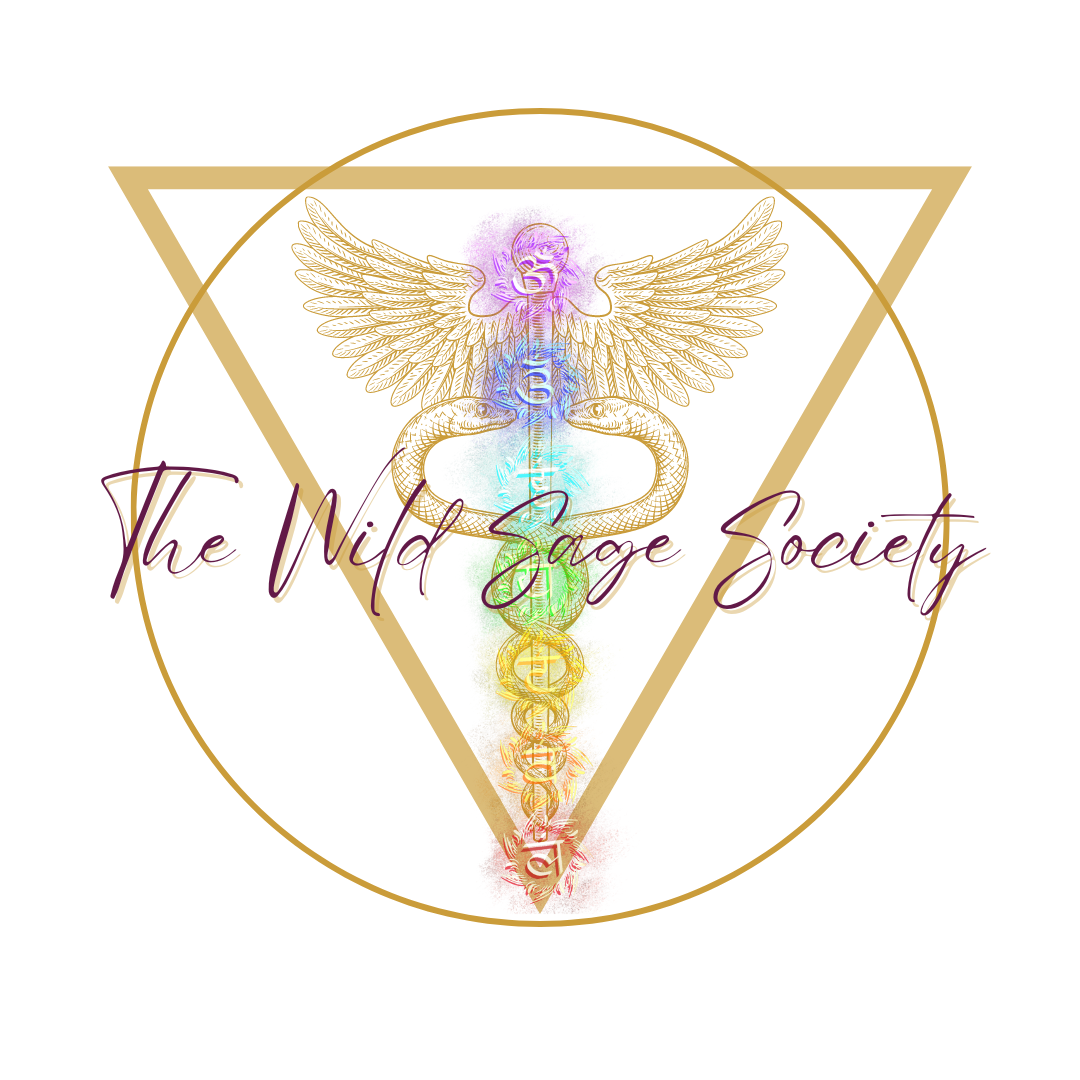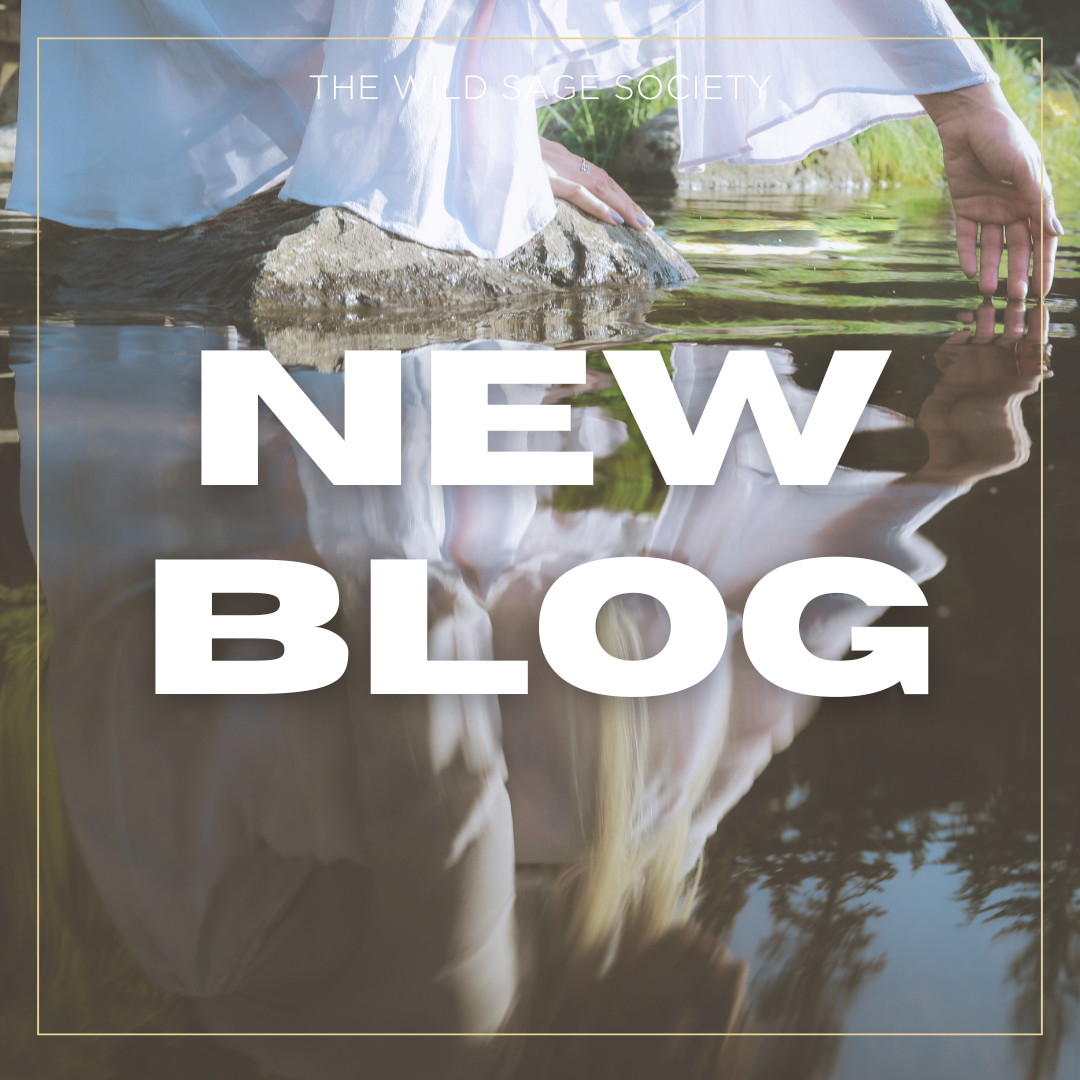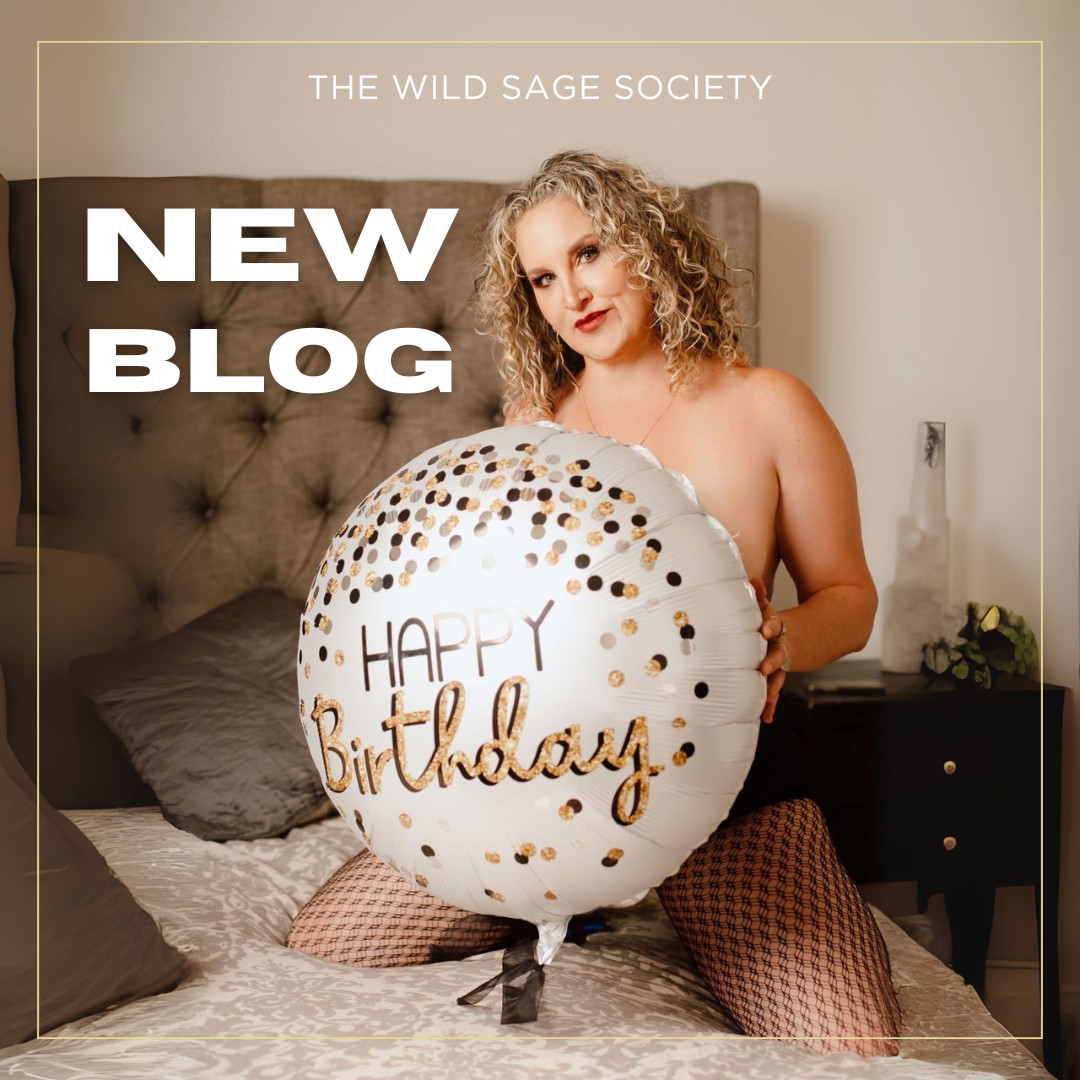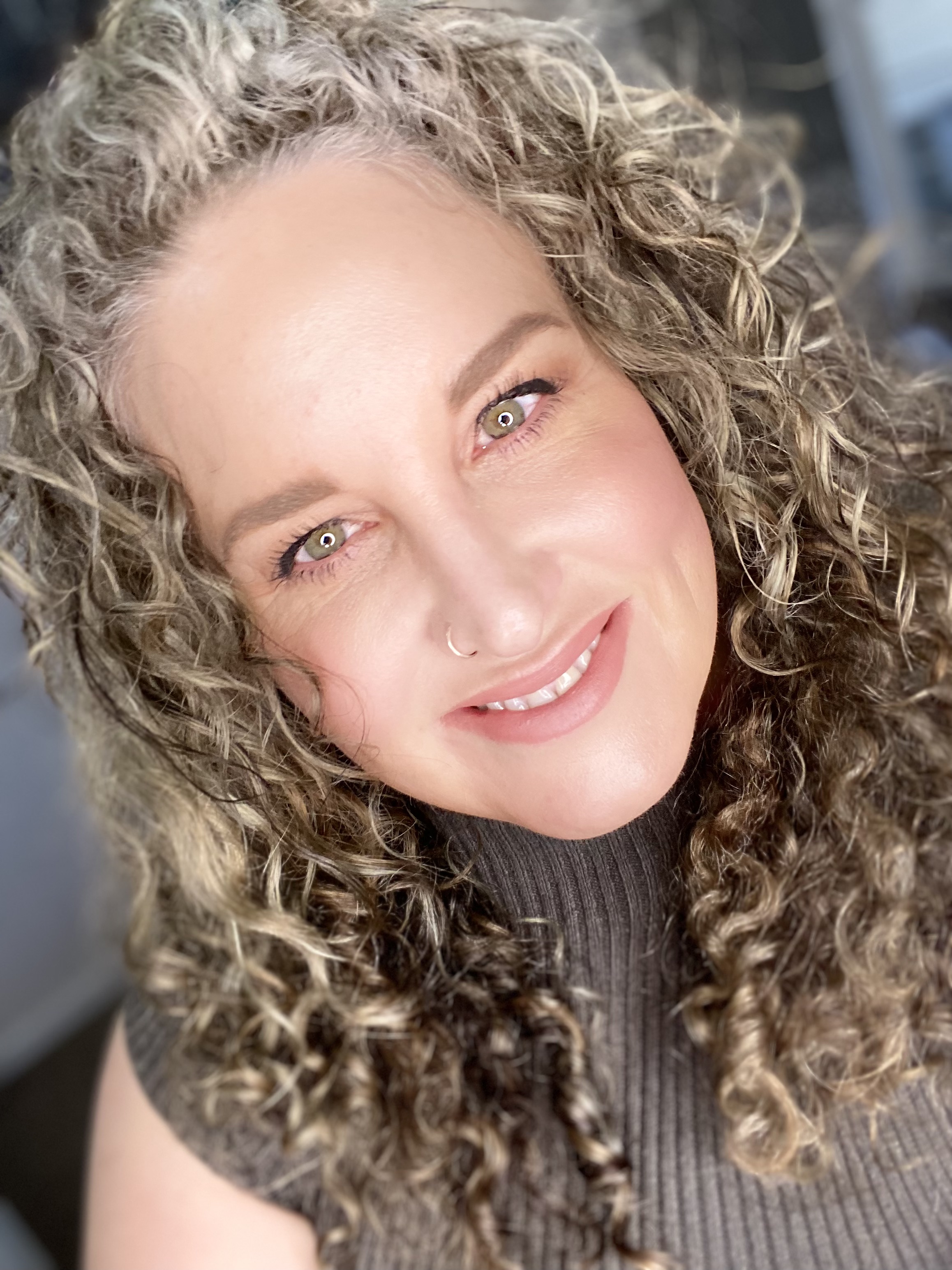Late August carries a unique kind of stillness—a sacred pause between seasons. The fire of summer begins to soften. The light starts to tilt. Nature prepares to let go.
For centuries, cultures around the world have honored this time as a portal of transition—a return to rhythm, reflection, and deep remembering. And for women especially, the Fall Equinox can serve as a mirror and medicine: a time to recalibrate from the outside-in and recommit to what matters most.
In this blog, I want to offer you a space to reflect on your inner rhythms, honor the power of seasonal transition, and prepare for something deeper: a return to yourself.
This sacred seasonal threshold also marks the relaunch of my Women’s Holistic Health Coaching & Mentorship Program—because this isn’t just about healing symptoms or learning protocols. It’s about anchoring into a way of being that honors your whole self.
Late Summer is a Threshold
In Traditional Chinese Medicine, late summer is associated with the Earth element—a time of nourishment, digestion, and grounding. It’s the season of the spleen and stomach, both physically and symbolically responsible for how we take in, integrate, and metabolize life.
If spring is for planting and summer for growing, late summer is the pause before the harvest.
But how often do we truly pause?
So many women move through life in perpetual summer: overdoing, overgiving, overfunctioning. Always producing. Always pushing.
And yet, the body—especially the female body—is cyclical. Rhythmic. Seasonal. She was never meant to live in constant output.
The Wisdom of the Fall Equinox
The Fall Equinox, arriving around September 22, is the moment of equal light and dark—a moment of balance. It invites us to ask:
- Where have I been overextending?
- What in me is ready to be released?
- What needs tending before the inward pull of winter?
The Equinox reminds us that letting go is a form of health. Just as the trees begin to drop their leaves, we too are invited to shed what no longer serves.
In the body, this might look like:
- Releasing inflammation
- Releasing toxic thoughts or people
- Releasing perfectionism and hyper-independence
- Releasing unintegrated trauma or stories about who you "should" be
This is the energetic soil from which true holistic healing grows.
My Own Equinox Reckoning
I didn’t always live seasonally or rhythmically. In fact, for most of my adult life, I lived in chronic override. I pushed through health symptoms, emotional fatigue, and the whispers of my intuition because I thought success required sacrifice.
But the body has its own laws. And eventually, mine called for a reckoning.
Over time, I began to see the connection between my autoimmune symptoms and the relentless stress I had normalized. I saw how deeply my nervous system needed restoration. I saw how I had abandoned seasonal self-care in favor of external achievement.
The shift didn’t happen all at once. It happened in moments of surrender. One fall, several years ago, I remember standing outside at dusk, watching the leaves drift to the ground. And this phrase came through so clearly:
"The body knows when it’s time to let go. So should you."
That was the moment I began building what would eventually become the Women’s Holistic Health Coaching & Mentorship Program.
Fall as a Feminine Portal
Autumn isn’t just a season—it’s an initiation. It calls us into feminine wisdom: slower, deeper, more rooted.
In fall, we:
- Turn inward
- Reflect honestly
- Tend to what has been neglected
- Prepare to rest
- Receive the harvest of our inner work
This is what I guide women into—not just during the program, but through how it’s timed. This next cohort begins right around the Fall Equinox for a reason.
Because I believe your healing should align with the Earth, not fight against it.
Your Invitation: Pause.Reflect.Recommit.
So I offer this as a journal prompt or ritual as we approach September:
1. What are you harvesting right now—emotionally, physically, spiritually?
2. What are you holding onto that you know it’s time to release?
3. What would it look like to move through this season with grace and grounded power?
2. What are you holding onto that you know it’s time to release?
3. What would it look like to move through this season with grace and grounded power?
About the Program: A New Kind of Health Reclamation
The Women’s Holistic Health Coaching & Mentorship Program isn’t another self-improvement bootcamp. It’s not about fixing yourself.
It’s about remembering yourself.
We work with:
- Nervous system regulation to address stress-related symptoms and root trauma
- Functional nutrition and detox support for inflammation and hormonal imbalance
- Sacred feminine principles to reconnect with the rhythms of your body
- Somatic tools and community support to heal in a space of compassion
This is for the woman who’s tried the supplements, the diets, the endless protocols—and still feels like something’s missing.
This is for the woman who senses that healing isn’t about doing more—but coming home to her body’s wisdom.
What Makes This Different
Here’s what I hear from women again and again after the program:
“I didn’t know how disconnected I had become from myself until I felt what it was like to return.”
“I’ve been in health coaching spaces before, but this one finally made me feel safe enough to rest, to feel, and to trust.”
“My symptoms didn’t just shift—my relationship with my body transformed.”
That’s the power of integrating science, soul, and somatic healing.
We Begin Again: September 20, 2025
Our next 12-week journey begins just before the Equinox—so you can enter this season in rhythm, not resistance.
You’ll walk away with:
- A calm, regulated nervous system
- Tools for long-term stress recovery
- A supportive community of like-hearted women
- Clarity around your personal health patterns
- A deeper relationship with your body’s signals and wisdom
Closing: This Is Your Season
Nature doesn’t rush. She doesn’t resist her own rhythms. And neither should you.
If your body has been asking for a different way—this is your invitation to listen.
If you’ve been craving not just relief from symptoms, but reconnection with your whole self—this is your portal.
As we approach the Fall Equinox, may you let go of what no longer fits. May you remember how to rest. And may you enter this new season with clarity, courage, and support.
Let this be the season where you stop fixing and start honoring.
Let this be the season you reclaim your rhythm.
Enrollment for the Fall Cohort opens soon.
[Join the waitlist or apply now]
[Join the waitlist or apply now]
With reverence,
Marcie
Marcie
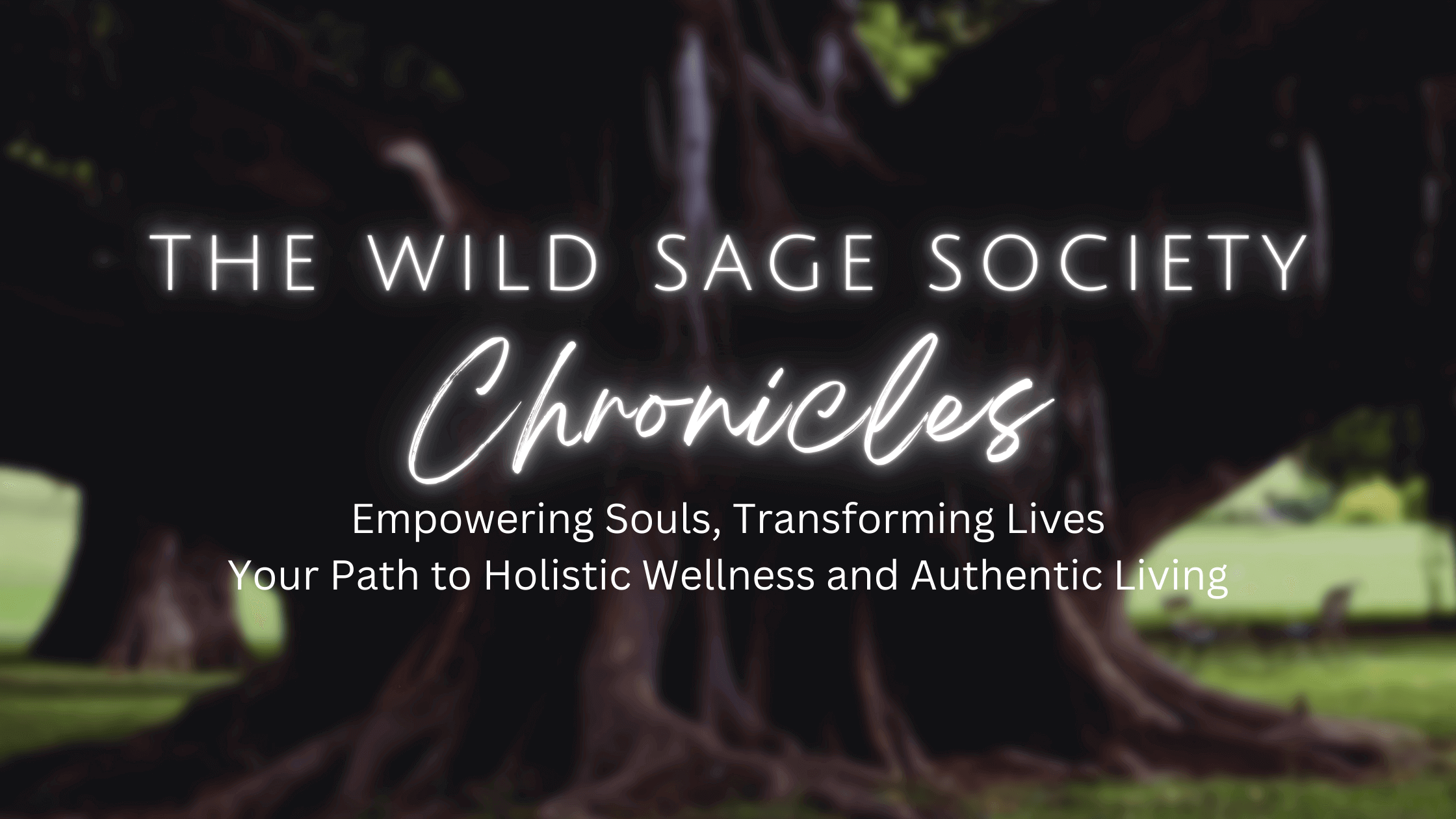
Autoimmune diseases are rapidly rising across the globe—and women are disproportionately affected. According to numerous clinical and epidemiological studies, women make up approximately 80% of all autoimmune disease diagnoses. Even more alarming, over half of these cases may be linked to one often-overlooked root cause: chronic stress.
In a world where stress is normalized, even glorified, many women silently carry the weight of unprocessed trauma, emotional burnout, hormonal disruption, and nervous system dysregulation. This blog explores why autoimmune disorders are so prevalent in women, how chronic stress plays a central role in triggering and exacerbating these conditions, and what can be done from a holistic, preventive, and integrative perspective.
What are Autoimmune Diseases?
Autoimmune diseases occur when the immune system, designed to protect the body from threats, becomes confused and starts attacking healthy tissue. There are over 100 recognized autoimmune diseases, with some of the most common including:
- Hashimoto’s thyroiditis
- Rheumatoid arthritis
- Systemic lupus erythematosus
- Multiple sclerosis
- Psoriasis
- Type 1 diabetes
- Celiac disease
These conditions can affect nearly any part of the body, including organs, joints, glands, and connective tissues, and often involve chronic pain, fatigue, inflammation, and systemic dysfunction.
Why Women?
The gender disparity in autoimmune conditions is one of the most intriguing and under-researched mysteries in modern medicine. Several biological, hormonal, and psychosocial factors contribute to the fact that 4 out of 5 people with autoimmune disease are women:
- Hormonal Influence: Estrogen has been shown to modulate immune activity. Fluctuations during menstruation, pregnancy, postpartum, and perimenopause can heighten autoimmune vulnerability.
- Genetics and Epigenetics: Women are more likely to carry specific gene variants associated with autoimmunity. However, genes alone don't determine destiny—environmental and emotional triggers often activate these susceptibilities.
- Immune System Robustness: Women typically have stronger immune responses than men. While this offers better protection against infections, it may also increase the risk of immune system misfiring.
- Social Conditioning and Suppression: From a psychosocial lens, women are often taught to care for others before themselves. Emotional suppression, boundary violations, and chronic people-pleasing can lead to internalized stress and trauma that dysregulates the immune and nervous systems.
The Chronic Stress - Autoimmune Link
Chronic stress isn't just a mental health issue—it’s a full-body phenomenon with physiological consequences. Stress activates the hypothalamic-pituitary-adrenal (HPA) axis, triggering the release of cortisol and other stress hormones. In short bursts, this system is adaptive. But when stress is unrelenting, the body never exits the fight-or-flight state.
Over time, chronic stress can cause:
- Immune system dysregulation: Stress impairs immune surveillance and balance, leading to overactivation or confusion of immune cells.
- Inflammation: Chronic stress increases inflammatory cytokines, which are directly implicated in autoimmune pathology.
- Gut permeability: Stress compromises the gut lining (“leaky gut”), allowing toxins and proteins to enter the bloodstream and trigger immune reactions.
- Epigenetic shifts: Persistent stress can literally alter gene expression, turning on or off genes that influence autoimmunity.
- Nervous system fatigue: Dysregulation of the autonomic nervous system can lead to parasympathetic shutdown (freeze response) or sympathetic overdrive (fight/flight) that never resolves.
A Holistic View of Women's Stress
Chronic stress in women is complex and multifactorial. It’s not just about a high-pressure job or a packed schedule—it’s about living in a body and society that rarely allows rest, expression, or full presence.
Consider the following chronic stressors:
- Emotional Labor: Unseen caregiving work, emotional support for others, and managing household responsibilities.
- Body Image & Beauty Pressure: Constant cultural messaging that a woman’s worth is tied to appearance.
- Medical Gaslighting: Being dismissed, misdiagnosed, or told symptoms are “in your head” by healthcare providers.
- Trauma (including microtraumas): Childhood adversity, sexual trauma, and accumulated relational ruptures that were never fully processed.
- Work-Life Imbalance: Navigating careers, motherhood, aging parents, and personal health with little structural support.
These layers of stress accumulate and manifest physically—often through chronic inflammation, hormone disruption, and immune confusion.
The Nervous System - Autoimmune Interface
One of the most exciting areas of research in autoimmune disease is the nervous system’s role in immune function. The vagus nerve, a key component of the parasympathetic nervous system, directly influences inflammation and immune modulation.
When the nervous system is dysregulated due to trauma or chronic stress, the body becomes stuck in survival mode, making it harder to mount a healthy immune response. This is why nervous system healing practices—such as somatic therapy, breathwork, vagal toning, and trauma release work—can be so powerful for those with autoimmune conditions.
Preventive & Integrative Strategies
Autoimmune diseases are complex and multifactorial. While there’s no one-size-fits-all cure, there are proactive, holistic approaches that can support immune regulation and reduce flare-ups:
1. Stress Reduction as Medicine
- Commit to daily nervous system regulation (breathwork, meditation, yoga nidra)
- Establish firm boundaries to avoid overextensio
- Schedule downtime like you would a medical appointment
- Explore somatic therapies or trauma-informed coaching
2. Anti-inflammatory Nutrition
- Eliminate common triggers: gluten, dairy, refined sugar, seed oils
- Increase omega-3s, leafy greens, and antioxidant-rich foods
- Heal the gut with probiotics, bone broth, and fermented foods
3. Detoxification Support
- Minimize chemical exposure (clean beauty, home products, water filters)
- Support liver and lymphatic function with herbs and hydration
- Regular movement and sweating (sauna, exercise) to eliminate toxins
4. Hormonal Balance
- Track your cycle and support each phase with nutrition and rest
- Work with a holistic provider to address estrogen dominance or adrenal fatig
- Adaptogens like ashwagandha, maca, and rhodiola can support resilience.
5. Spiritual & Energetic Hygiene
- Rituals of grounding, intention-setting, and energy clearing
- Reconnection to purpose, community, and personal sovereignty
- Nature time, creativity, and sacred pause
Real Talk: This Isn't " All in Your Head"
Many women with autoimmune conditions have been gaslit by the medical system, told their symptoms are psychosomatic, or left with little more than a lifelong prescription and a pat on the back.
Let’s be clear: your symptoms are real. But the current medical paradigm often separates physical illness from emotional trauma, immune function from stress levels, and the gut from the brain.
The truth is, the body keeps score. And chronic stress is not just a mental health issue—it’s a root cause of immune collapse.
Final Thoughts
illness, but as a body’s response to chronic stress, trauma, and systemic overload—especially in women.
Healing must go beyond symptom suppression. It must include nervous system regulation, emotional restoration, and structural changes that support women’s well-being at the cellular and societal level.
If you’re a woman dealing with unexplained symptoms, chronic inflammation, or a diagnosed autoimmune condition, know this:
- You are not alone.
- It’s not your fault.
- Your body isn’t broken—it’s brilliant and communicating.
- You can support healing—not overnight, but layer by layer.
The way forward is not just medical. It’s holistic, integrative, and deeply compassionate.
Resources & References:
- Harvard Health Publishing – Women and Autoimmune Diseases
- PubMed Central – Stress and Autoimmune Disease
- The Institute for Functional Medicine – Immune System and Stres
- Dr. Gabor Maté – “When the Body Says No
- Dr. Sara Gottfried – “The Hormone Cure”
- Donna Jackson Nakazawa – “The Autoimmune Epidemic”
- The Body Keeps the Score by Dr. Bessel van der Kolk

What does it really take to turn your pain into purpose?
In a world that often rewards hustle over healing and silence over speaking up, The Wild Sage Society Podcast is a space where stories of resilience, reinvention, and radical self-love come to life. In one particularly powerful episode, host Marcie Walker welcomes Holly Oldham—a luxury cleaning entrepreneur and domestic violence advocate—who has lived through survival and emerged with a mission: to help others reclaim their space, their voice, and their lives.
In a culture that often rewards overachievement, silence, and self-sacrifice, choosing to pause is a revolutionary act. Slowing down isn’t weakness—it’s wisdom. And learning how to reflect and move forward, on your own terms, is the foundation of lasting personal transformation.
This is a reminder that healing isn’t just a personal journey—it’s a process of remembering who you are beneath the roles, noise, and survival strategies.
The Philosophy That Changed Everything
“Pause. Reflect. Move forward.”
Simple, right? But how often do we truly allow ourselves to do it?
We live in a society that glorifies busyness. We're told to keep pushing—even when our bodies are exhausted, our minds are foggy, and our hearts are quietly breaking. But the truth is: growth begins in the stillness. Healing begins in reflection. And forward movement begins with clarity—not force.
This powerful three-step philosophy isn’t just about mindset—it’s about embodiment. A moment to feel, to listen, and to choose again.
Your Environment Is a Mirror
Our emotional well-being is deeply intertwined with our physical environment. Messy space? Scattered mind. Cluttered home? Overwhelmed nervous system.
What if cleaning your house wasn’t just about tidiness, but about energetic reset?
Reimagining your living space with intention can be a grounding ritual that clears not just the dust—but also the emotional debris we carry. Start small. One drawer. One corner. One shelf. See how you feel afterward.
Creating an environment that supports your well-being is a powerful form of self-respect—and often, the first step toward reclaiming your life.
Reinvention is Not a One-Time Event
Many people think reinvention is a grand, dramatic shift. But more often, it’s slow. Messy. Ongoing. It’s waking up one day and realizing: I want more peace. I want to feel like myself again. I want to be free of survival mode.
Whether you're healing from burnout, stepping away from toxic patterns, or simply trying to reconnect with your joy—remember this: you’re allowed to begin again. And again. And again.
You don’t need a big plan. You just need a willingness to be honest with yourself.
Vulnerability as a Strength
There’s incredible power in naming what you’re going through. In asking for support. In telling the truth about your life—not just the curated, filtered version, but the real, raw one.
Vulnerability isn’t a weakness. It’s your greatest tool for connection, authenticity, and growth.
And if you're walking through healing with humor, softness, or even sarcasm—embrace it. Laughter, like tears, is a sacred release.
Action Steps to Reclaim Your Path
- Practice the Pause
Take 5 minutes each morning to breathe and check in with yourself. Ask: What do I need today to feel grounded? - Clear Your Space
Choose one area of your home that feels heavy. Clean it with care and intention. See what shifts internally. - Move Forward with Intention
Instead of rushing into action, ask: What’s the most nourishing next step for me right now?
These simple actions build momentum over time. They signal to your nervous system that it’s safe to come home to yourself.
Final Thoughts: You are Not Broken - You're Becoming
You don’t need to earn your healing. You don’t need to justify your fatigue or hide your truth. You’re allowed to outgrow people, habits, and environments that no longer serve your soul.
Reclaiming your path is not about perfection—it’s about presence.
So wherever you are in your journey, let this be your gentle reminder:
Pause. Reflect. Move forward.
Repeat as needed.
🎧 Want to hear more?
Listen to the full episode on The Wild Sage Society Podcast for a deeper conversation about healing, empowerment, and emotional reinvention.

There’s something about this time of year—just after my birthday, deep into the pulse of summer, with the whisper of the Fall Equinox on the horizon—that always calls me inward. Not in a way that feels heavy or retreating, but in a way that asks me to root deeper so that I can rise higher.
This is the medicine of the season. Of aging. Of awakening. And of the work I’m called to share through The Wild Sage Society.
The Earth is starting to turn again. The Solstice taught us to pause and bask in the full light. Now the invitation is to soften, to prepare, to gather our wisdom and prepare to plant again—not in springtime, but in the fertile soil of soul-deep readiness.
This is why the Fall Equinox is the perfect moment to relaunch the Women’s Holistic Group Coaching & Mentorship Program. Not because we need another program to do more—but because we need sacred spaces to remember who we are becoming.
The Rebrith After the Reckoning
If you're reading this, I imagine you’ve felt the ache of transformation. That holy ache that comes when you can no longer live a life that asks you to be small, silent, or scattered.
Maybe you’ve walked through a dark night of the soul. Maybe you’ve released identities that once kept you safe. Maybe you’re learning how to mother yourself in ways no one else could.
This is what I call the reckoning. And the beauty of the reckoning is that it always births a rebirth—if we allow it.
My own journey into midlife hasn’t been tidy. It’s been messy, honest, sacred, and strangely circular. I've had to sit with what no longer fits. I’ve had to face the patterns that drained me. I’ve had to remember that slowing down isn’t failure—it’s a reclamation of rhythm.
And through all of that, I’ve emerged more rooted. More present. More fully myself.
This is what the Fall Equinox asks of us: to bring our light and our shadow into balance, to harvest the truth, and to walk forward with intention.
Why I Created the Women's Holistic Group Coaching & Mentorship Program
This program was born out of lived experience. It’s not about a rigid structure or a quick fix. It’s a living, breathing container for women in midlife who are ready to tend to their own becoming.
It’s a space for:
- Releasing inherited expectations
- Regulating the nervous system through nourishment and presence
- Realigning with feminine rhythms
- Reconnecting with inner wisdom, clarity, and truth
So many of us have been taught to push through, to abandon ourselves in service of being needed. But the season we are entering asks us to become rooted women who rise from within—not from force, but from alignment.
The fall cohort will open on September 22, 2025, the Autumnal Equinox—a day of equal light and dark, where balance is not just metaphor but embodied truth.
Soulful Alignment Over Hustle
The Wild Sage Society was never meant to be a brand that shouts. It’s a movement of remembering. Of weaving ancestral wisdom, somatic healing, and practical tools for women who want to age consciously and lead from their inner authority.
This program isn’t about fixing what’s broken—it’s about coming home to what’s already wise.
Together, we will explore:
- Nervous system literacy and regulation
- Holistic hormone health and food as medicine
- Emotional and energetic boundaries
- Shamanic and ancestral healing practices
- Mindset work through the lens of sacred feminine leadership
You don’t have to walk alone. You don’t have to figure it out all by yourself. You get to be held. You get to be witnessed. You get to be deeply seen.
And most importantly, you get to lead your own healing.
Becoming Who You Were Always Meant to Be
This isn’t just a coaching program. It’s a seasonal ceremony of self. A sacred pause in your timeline to say:
I am ready to stop running. I am ready to rise differently. I am ready to walk forward from within.
Every woman I work with is a teacher in her own right. You’ve lived enough life to know what doesn’t work. You’ve been through the initiations that carved you. Now it’s time to choose a different path—one led not by fear or performance, but by embodiment and truth.
At fifty, I can say with absolute conviction: the only way to sustainably lead, love, or live is through authentic presence.
You don’t need a new version of yourself. You need the spaciousness to remember your original one.
What's Included in the Fall Equinox Cohort
This 12-week journey will include:
- Weekly group coaching calls to explore themes like emotional regulation, hormone literacy, energy hygiene, and sacred leadership
- Monthly 1:1 mentorship sessions to support your personal transformation
- Private community access to connect with other like-hearted women
- Live masterclasses with guest teachers on embodiment, nourishment, breathwork, and more
- Integration rituals and seasonal ceremonies to deepen your connection to nature and self
Every element is designed to meet you where you are—whether you’re navigating burnout, perimenopause, spiritual awakening, or all of the above.
This is not about doing more. It’s about unlearning, unwinding, and remembering the ancient wisdom in your bones.
You Already Belong Here
There is no entry test for this journey. If your soul is whispering “this is for me,” trust that.
You don’t have to be perfectly healed. You don’t have to have it all figured out. You don’t need a polished plan.
You just need a willingness to show up—honestly, imperfectly, and fully.
Because here’s what I know to be true: when women come together with intention, when we are witnessed in our wholeness, when we dare to slow down and listen—everything changes.
The Season Ahead
So here we are. Mid-July. The heat still rising, the edges of summer softening. You might feel like something is shifting in you. That a layer is ready to shed. That a new truth is stirring underneath the surface.
This is your season to root. To regulate. To rise.
And I would be honored to walk with you.
Registration for the Fall Equinox cohort opens August 12, 2025. We begin our journey together on September 22.
You are not too late. You are not too much. You are right on time.
Let this be the season you choose your becoming.
With reverence,
Marcie
Founder of The Wild Sage Society
Women's Holistic Health Coach, Mentor & Midlife Guide
Women's Holistic Health Coach, Mentor & Midlife Guide

Most of us are taught to run from discomfort.
To silence pain, numb out, distract, “fix it,” or pretend we’re fine.
But what if your greatest pain is not something to escape—
To silence pain, numb out, distract, “fix it,” or pretend we’re fine.
But what if your greatest pain is not something to escape—
What if it’s the portal to who you’re meant to become?
In the latest episode of The Wild Sage Society Podcast, we sit down with Jesseca Banchy—a former ER nurse whose world turned upside down during the pandemic. After sustaining a life-changing injury, she left Western medicine behind and stepped into a radical new reality—one where science and soul could finally coexist.
And in doing so, she discovered something most of us aren’t taught in our healing journeys:
👉 True healing isn’t about fixing. It’s about feeling.
It’s about peeling back the layers of what the world told you to be and remembering who you are at your core.
It’s about peeling back the layers of what the world told you to be and remembering who you are at your core.
This episode is a powerful invitation to rethink what healing really means.
From ER Nurse to Embodied Healer: Jesseca’s Story
Before her transformation, Jesseca lived in the fast-paced, high-stress world of emergency medicine. She was the helper. The fixer. The one who kept going, no matter what.
Until her body said, “No more.”
An injury during the height of the pandemic forced her to stop. And in that pause, Jesseca didn’t just heal physically—she began the deep, soul-level process of redefining her identity, her purpose, and her relationship with pain.
She chose to stop bypassing the signals and start listening.
To slow down.
To feel what she’d been trained to suppress.
To build a new kind of life rooted in wholeness, not hustle.
To slow down.
To feel what she’d been trained to suppress.
To build a new kind of life rooted in wholeness, not hustle.
Why “Healing Beyond Belief” Matters
So many women are walking around thinking they're broken.
They're not. They're just disconnected.
They're not. They're just disconnected.
Jesseca’s story reveals that healing isn’t about erasing the hard stuff—it’s about transforming your relationship to it.
She teaches us that:
- Trauma doesn’t mean you’re doomed—it means you have a deeper story to rewrite.
- There’s wisdom in every wound—but only if we’re willing to go there.
- You can’t think your way into healing—you have to feel your way into it.
“Transformation is a continuous journey, not a destination.” – Jesseca Banchy
The Bridge Between Science & Soul
As a former medical professional, Jesseca brings a powerful perspective:
You don’t have to choose between holistic healing and evidence-based practices.
You don’t have to choose between holistic healing and evidence-based practices.
You can honor your nervous system, your hormonal shifts, and your biological reality while also trusting your intuition, tuning into energy, and co-creating with the Universe.
That’s where true healing happens—in the both/and.
In the space where breath meets biology.
Where emotional regulation and earth medicine hold hands.
Where eco-conscious living becomes part of the self-care ritual, not separate from it.
In the space where breath meets biology.
Where emotional regulation and earth medicine hold hands.
Where eco-conscious living becomes part of the self-care ritual, not separate from it.
Reclaiming Your Identity as a Woman
This episode is also about liberation—especially for women in midlife.
Jesseca reminds us how often we tie our worth to our roles:
Jesseca reminds us how often we tie our worth to our roles:
The caregiver. The perfectionist. The achiever. The peacekeeper.
But what happens when those roles no longer fit?
You reclaim the parts of yourself that got buried under expectation and obligation.
You give yourself permission to evolve—and to own your healing, your voice, and your rhythm.
You give yourself permission to evolve—and to own your healing, your voice, and your rhythm.
“There is nothing more powerful than a woman who chooses herself.”
A Soul-Led Reflection Practice
Feeling inspired? Here’s how to start integrating what you just read (or heard):
Journal Prompt:
What belief about healing or identity are you ready to release?
What belief about healing or identity are you ready to release?
Daily Ritual:
Each morning or night, write down 3 things you’re grateful for—not just outcomes, but moments. This anchors you in presence and opens the door for deeper healing.
Each morning or night, write down 3 things you’re grateful for—not just outcomes, but moments. This anchors you in presence and opens the door for deeper healing.
Listen to the Full Conversation
If you’re navigating a life transition, wrestling with burnout, or simply ready to live with more truth and less pressure—this episode is for you.
Final Thoughts from Marcie Walker
At The Wild Sage Society, we believe healing is not a linear checklist.
It’s a remembering.
A sacred return.
An unraveling of what’s false so what’s real can rise.
It’s a remembering.
A sacred return.
An unraveling of what’s false so what’s real can rise.
You are not broken. You are becoming.
And you don’t have to walk this path alone.
And you don’t have to walk this path alone.
